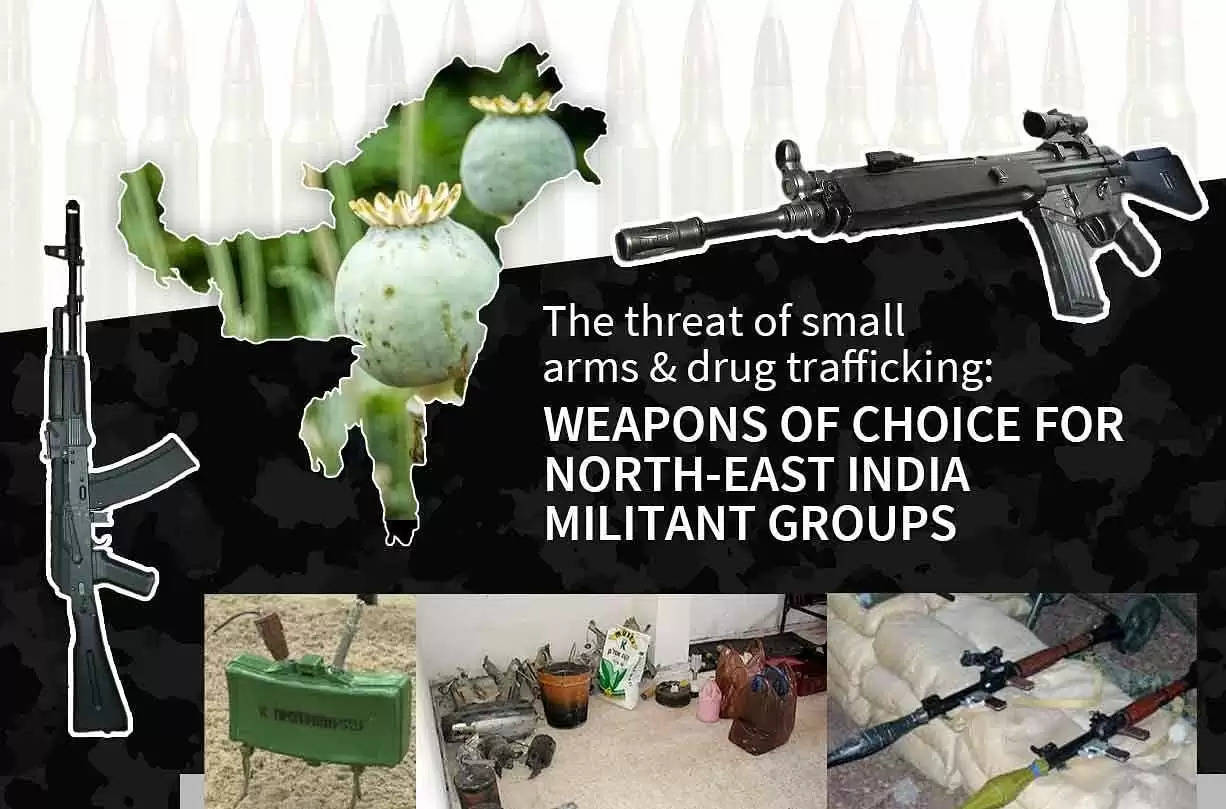5 sophisticated weapons famous among North-East India militant groups

NORTHEAST | SEPT 07, 2020:
North-East India (NE India) is the melting pot of various insurgent and ethnic rival groups. Adding to it, the porous borders allowing illegal narcotics trade to flow freely are some of the reasons for insurgencies to continue and spiral.
The insurgents do need sophisticated weapons to overthrow the firepower of the state for which they need funds and very often illicit trade in narcotics is the best source to raise for weapons procurement.
Here are some of which is famous among insurgent groups:
HECKLER & KOCH HK33
HK33 is a 5.56mm assault rifle developed in the 1960s by West German armament manufacturer Heckler & Koch GmbH (H&K), primarily for export.
As a scaled-down version of their G3 battle rifle, HK 33 can fire 750 bullets per minute. Additionally, the HK33 can be used to mount a 40 mm under-barrel HK79 grenade launcher or a blank-firing adaptor.
United Liberation Front of Assam (ULFA-I) chief Paresh Baruah was instrumental in adding this German rifle to its arsenal.
AK SERIES
A Kalashnikov rifle is any one of a series of automatic rifles based on the original design of Mikhail Kalashnikov and officially known in Russian as "Avtomat Kalashnikova" but are widely known as Kalashnikovs, AKs, or in Russian slang, as a "Kalash".
The AK-47 can also mount a cup-type grenade launcher that fires standard RGD-5 Soviet hand-grenades with a maximum effective range of approximately 150 meters.
The relative cheapness has been one of the most important advantages of the AK-47. According to intelligence reports, AK series rifles are available for Rs 4 to Rs 4.5 lakh each.
RPG-7
The RPG-7 is a portable, unguided, shoulder-launched, anti-tank rocket-propelled grenade launcher.
In Mogadishu, Somalia, rocket-propelled grenades were used to down two U.S. Army Black Hawk helicopters in 1993 which was portrayed in a book 'Black Hawk Down' by Mark Bowden.
Tribal guerrillas in the past have used rocket-propelled grenades which killed 20 Indian soldiers in the mountainous northeastern state of Manipur.
IED
A game-changer in the theatre of battle. An improvised explosive device (IED) is a bomb constructed and deployed in ways other than in conventional military action.
IEDs fall into three types of categories: Package Type IED, Vehicle-Borne IEDs (VBIEDs)and Suicide Bomb IED.
IEDs are assembled inside pressure cookers, fire extinguishers which makes the nature of it more deadly whereas the Naxals in Hyderabad and Bihar resort to the use of gelatine sticks for their IEDs.
IEDs found in Kashmir and North-East India not only need expertise and training but also access to resources.
CLAYMORE MINE
Explosives researcher Norman A. MacLeod used it to design a weapon to counter human-wave assaults, such as those waged by Chinese soldiers against Americans in the Korean War. He named his antipersonnel mine the claymore, after the two-handed sword wielded by his Scottish ancestors.
The Claymore is command-detonated and directional, meaning it is fired by remote-control and shoots a pattern of metal balls into the kill zone like a shotgun. Internally the mine contains a layer of C-4 explosive behind a matrix of about seven hundred 1⁄8-inch-diameter (3.2 mm) steel balls set into an epoxy resin.
In 2013, GNLA militants triggered a powerful claymore IED blast at Nengkhra in East Garo Hills.
ALSO READ:
Meet 'Doctor SP', the frontline warrior with a difference!

















